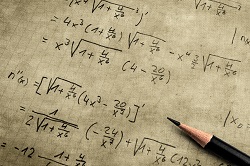Simplifying complex algebraic geometry
The EU-funded FOSICAV project is one of complex algebraic geometry – and thus involves complicated explanations and complex results. For example, according to project researchers, one fundamental aspect of algebraic geometry is that varieties vary in families, and the parameter spaces are themselves varieties. By way of definition, a variety is a geometric object defined by polynomial equations in the n-dimensional projective space with coordinates in the field of complex numbers. Project space is a slight enlargement of the usual physical n-space obtained by adding points at infinity, such that two parallel lines in the physical space meet at a unique point at infinity. Said simply, the project set out to have a substantial impact on algebraic geometry. “We expect our down-to-earth approach to enumerate invariants will enable computations that are, by nature, impossible using current methods,” says project coordinator Ciro Ciliberto. Analysis by degeneration Here’s where things get complex. As the goal of the project was to enumerate curves on K3 surfaces (a complex or algebraic smooth minimal complete surface that is regular and has trivial canonical bundle) using degeneration methods, project researchers undertook the geometric study of various families of sub-varieties of certain complex algebraic varieties of small dimensions and, mainly, of families of curves. According to Ciliberto, Severi varieties are a typical example as they parametrise curves of given degree and geometric genus in the projective plane and the general curve has a prescribed number of ordinary double points and no further singularity. In addition to exploring these varieties’ dimensions, smoothness and irreducibility properties, researchers also determined their Hilbert polynomials, which encode their degrees and are important enumerative invariants. “A central feature of our project was to conduct this analysis by degeneration – to study families of sub-varieties in a given variety X, we let X degenerate and looked at what happened in the limit,” explains Ciliberto. “For instance, to study curves on a general K3 surface we let it degenerate to a union of projective planes, the dual graph of which is triangulation of the real two-sphere.” Specifically, the project considered the following families of sub-varieties: families of curves with prescribed invariants and singularities in surfaces, with special attention to the two cased of the projective plane and of K3 surfaces; families of hyperplane sections with prescribed singularities of hypersurfaces in projective spaces; families of curves with a given genus in Calabi-Yau three-folds; and families of surfaces in the projective three-space containing curves with unexpected singularities. Pure mathematics What all of this makes clear is that the FOSICAV project is one of pure mathematics. As such, it is meant to stand by itself and not necessarily have any ‘direct’ or ‘everyday’ application. “It is a well-documented fact that pure science fuels more applied research, and eventually the development of concrete applications,” says Ciliberto. “Thus, it is of crucial importance to maintain open-minded research like the FOSICAV project as a way of exploring paths less likely to have any application, for someday they might be the ground from which a fertile revolutionary idea will grow.”
Keywords
FOSICAV, mathematics, algebraic geometry



